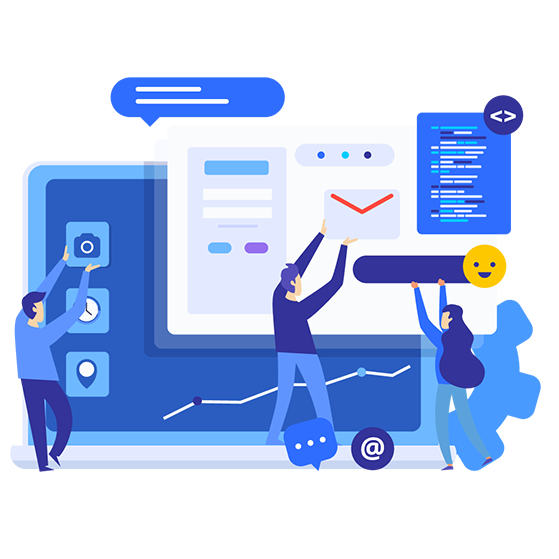Introduction
✍ Arjun Adhikari, Django & Python Developer
Enterprise app development is the process of creating applications for large businesses that are customized to their complex business requirements. These applications can be deployed on the cloud across a variety of platforms and networks.

Enterprise
- Enterprise essentially means that the company has multiple levels,
locations, division or departments that all collaborate to achieve
big picture business objectives.
For eg: Customer Relationship Management (CRM) is often referred as enterprise application (large scale business).
Enterprise Application
- It is an application that a business uses to support the organization
in order to solve enterprise problem. It denotes a software platform
that is quite complex and comparatively huge for small business.
Enterprise application demands high requirements in terms of security. User access and maintenance [application for large scale business].
Technologies used to develop Enterprise Application
- User Interface layer (Presentation Layer) - AWT, Swing, HTML, JSP, Velocity Framework
- Business Processing Layer - Servlets, JSP, EJB
- Data Storage and Access Layer (Persistence Layer) - JDBC, EJB
For eg: Java provides the enterprise solutions whereas its editions serve different purposes.
- J2SE - Introduction, OOP, String Manipulation
- J2EE - Servlets, EJB, Middleware Service, JSP
- J2ME - Wireless Messaging, Mobile XML etc.
Java is widely used for developing enterprise applications (EA) because:
- Learning Curve
- Java has a vast array of libraries, frameworks, tools and server provider.
- Platform independence.
- Maturity
- Java ensures security, stability, robustness, high performance etc.
Example of Enterprise Application
- Customer Relationship Management (CRM)
- Automated Billing System
- Enterprise Resource Planning
- HR Management
Framework
- A framework is a real or conceptual structure intended to serve as a support or guide for the building of something.
- In computer systems, a framework is often a layered structure indicating what kind of programs, can should built and how they would interact.
Enterprise Application vs Desktop Application vs Web Application
a. Desktop Application
- Runs on single tier architecture.
- All the presentation logic, business logic and data storage and access logic resides in a single machine.
- Moreover, it can be part of network but the application and its database stay in the same machine.
- It doesn't support multiple users concurrently.
b. Enterprise Application
- It normally includes more than a single tier.
- Multiple users can access the application at the same time. (Multiple concurrent users)
- It have client tier (java client, browser, mobile based client), representation tier (JSP), business logic tier (EJB), and data storage and access tier (JDBC).
- It can be distributed system.
- It can be a web application or a desktop application.
c. Web Application
- It is a web application that runs on a web server.
- Web applications runs on a web server like Tomcat whereas desktop applications runs on a desktop machine and enterprise applications runs on a application server like Glassfish.
- Web applications can be accessed by any browser.
- It needs internet access to run.